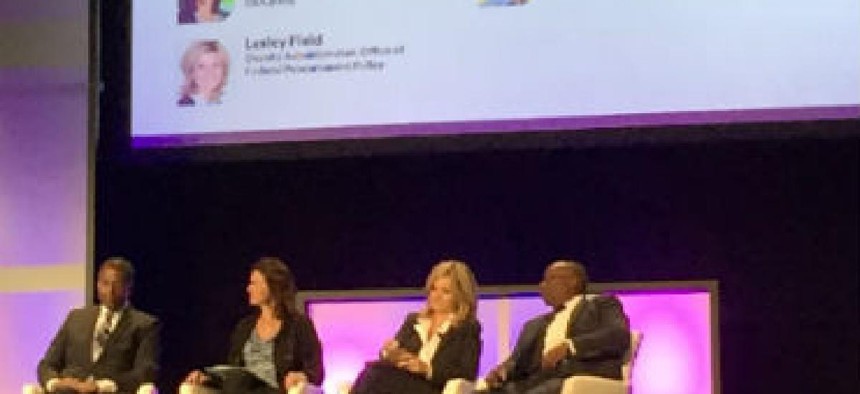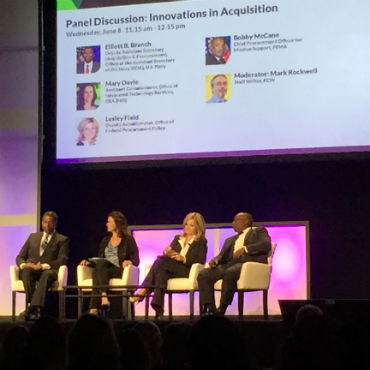How agencies seek to shape the acquisition process

Revamping the federal acquisition process requires innovation and a creative approach to break with the way things have been done and appeal to the incoming workforce.

Federal leaders discuss the future of acquisition at the 2016 ACQUIRE conference. Photo credit: Bianca Spinosa, FCW.
The federal acquisition process has traditionally been a protracted one, but agencies are looking for creative solutions to simplify the process of getting the tools they need and attract an innovative workforce.
Government officials talked about the future of acquisition strategy and ways to improve its effectiveness on June 8 at the ACQUIRE conference sponsored by FCW.
"We are now really looking at things very differently than we have in the past," said Mary Davie, assistant commissioner for the Office of Integrated Technology Services at the General Services Administration, during a panel discussion. She added that it is important to bring functional experts together find a better path forward.
Lesley Field, deputy administrator of the Office of Federal Procurement Policy, said OFPP's acquisition innovation labs initiative is the "first step in the right direction."
"The speed of business moves way too fast for this traditional acquisition life cycle," said Bobby McCane, chief procurement officer at the Federal Emergency Management Agency.
At FEMA, McCane said two to three major acquisition projects saved time by bringing the "right players in the room" from the beginning.
Elliott Branch, the Navy's deputy assistant secretary for acquisition and procurement, stressed the importance of thinking about product innovation and not just process innovation.
"What we've done in the name of innovation of process is we have created way too many rules, and those rules have added a level of complexity that often gets our workforces to the wrong answer," Branch said. "I think it's the soul-sucking process that we have imposed on [the workforce] that dampens their use of creativity."
Creativity can also extend to how agencies appeal to prospective workers. To match the changing approach to acquisition, agencies are seeking to reinvent the way they present themselves to the next generation of government employees.
"We need to sort of market ourselves differently," McCane said. We need to say, "'You're not simply doing procurement; you are helping to enhance the lives of the American people.... This is the mission of FEMA, would you like to be a part of it?'"
Public service will always be a draw for some, but "we need to understand what kind of environment appeals" to the generation now preparing to enter the workforce and cater to its interests, Branch said.
Given the competition for innovators between the public and private sectors, some agencies might want to emphasize their roles as training grounds for workers to gain valuable experience.
"Our people are highly sought after," Branch said. "Here's an example of where we need to turn our thinking. My view is if other agencies want people the Navy trains, then we need to be the training organization of choice for the federal government."
In addition, providing young employees with hands-on experience with real-life projects can expedite their learning process.
"We have to rethink how you get experience," Field said. "Pilots use simulators to get air time.... And we've figured out it really works [for employees] to sit down on a real-life project."
NEXT STORY: Carper takes on acquisition in NDAA amendment


